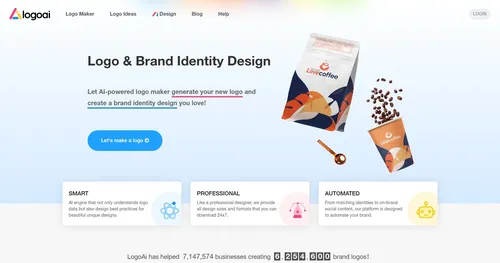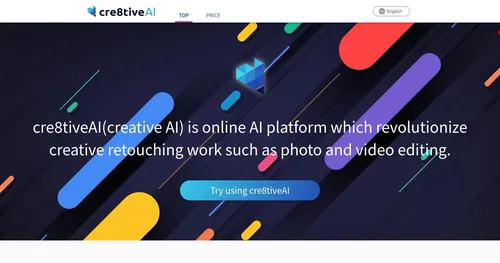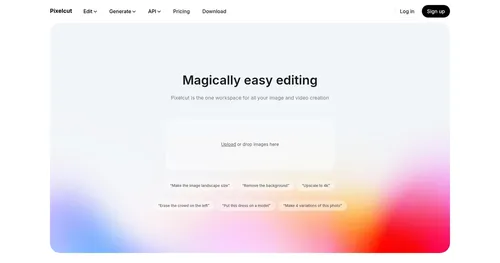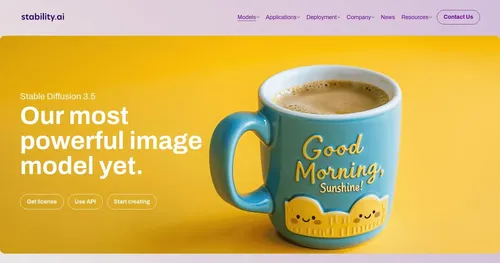BlinkShot
You know how sometimes you sit down to write an email or a blog post, and you think, “This needs a picture right here,” but then you waste half an hour hunting through stock photo sites or fiddling with clunky software that takes forever to spit out something usable. Well, BlinkShot flips that script entirely. It runs right in your browser, pulls from the Flux model via Together AI, and churns out images at 1024 by 768 pixels the second your fingers hit the keys. No downloads, no accounts, just pure, open-source speed. I mean, the GitHub repo lays it all out there, from the Next.js setup to the Tailwind styling, so if you’re the type who likes to peek under the hood, it’s all yours to tweak.
The real magic happens in that text box. Start typing “a cozy cabin in a snowstorm,” and boom, pixels start assembling before you even finish the sentence. It’s got this three-step inference trick that balances quality and zip, clocking in under a second per update, which feels like watching a sketch come alive on fast-forward. Users on Reddit rave about how it cuts through the usual wait times that plague tools like Midjourney, where you’re stuck queuing up generations that might not even match what you had in mind. Folks love the history gallery too, that horizontal strip at the bottom where past prompts stack up like a quick-reference mood board. You can flip through them, refine on the fly, and it keeps things feeling collaborative, almost like the AI is riffing with you. And since it’s free forever, with options to bring your own API key if you hit limits, it levels the playing field for hobbyists who can’t drop cash on premium tiers.
Of course, nothing’s perfect, and BlinkShot has its quirks. The outputs lean toward a certain warmth in the tones sometimes, almost a subtle yellow cast that shows up in brighter scenes, which might throw off purists chasing exact color matches. Compared to something like Leonardo.ai, which packs in more customization layers like fine-tuned styles or upscaling tools, BlinkShot keeps it lean, so if you need heavy editing post-generation, you’re heading to Photoshop anyway. Pricing stays generous here, all free access with no hard paywalls, while Leonardo pushes pro features behind subscriptions that add up quick. Still, that simplicity wins fans on X, where creators share how it sparked ideas during live streams or brainstorming sessions without breaking the flow.
One surprise that caught me off guard? The consistency mode, using fixed seeds to lock in elements across tweaks. Type in a base prompt, generate, then nudge details like “add a red door,” and it holds the cabin’s shape without warping the whole scene. It’s not flawless, mind you, hands or fine textures can blur if you’re too vague, but it beats the random resets you get elsewhere. Developers dig the open-source angle too, forking the repo to build custom versions, like integrating it into apps for real-time previews. Against Hailuo AI, which shines in video extensions but lags on pure stills, BlinkShot holds its own for static work, especially at no cost.
What really sets it apart in a crowded field is that browser-first approach. No installs mean you can pull it up on any device, share a link mid-convo, and collaborate instantly. Teachers use it for on-the-spot visuals in class, bloggers for header shots that fit the vibe without stock photo blandness. Sure, if you’re deep into pro workflows, you might pair it with DALL-E for those hyper-real edits, but for quick hits, it’s unbeatable. I think most people will find it addictive once they try chaining prompts, watching the image evolve like a living draft.
Next time you’re stuck on a visual, fire up BlinkShot and start typing. Play with seeds for steady iterations, and if tones skew warm, cool them in post. You’ll wonder how you ever waited around for renders before.
What are the key features? ⭐
- Real-time generation: Produces images in milliseconds as users type prompts, using Flux for instant feedback.
- Open-source code: Full GitHub repository allows modification and local deployment with Next.js.
- Image history: Horizontal gallery tracks and navigates previous generations for easy refinement.
- Consistency mode: Employs fixed seeds to maintain elements across prompt iterations.
- Bring your own key: Supports custom API keys via Together AI for unlimited usage beyond free limits.
Who is it for? 🤔
Examples of what you can use it for 💭
- Blogger: Types descriptive prompts to create custom article headers instantly, saving time over stock searches.
- Educator: Inputs lesson topics during class to visualize concepts for students in real time.
- Designer: Refines mood board elements by chaining prompts with consistency mode for cohesive sets.
- Developer: Deploys locally from GitHub to integrate real-time generation into custom web apps.
- Artist: Experiments with evolving scenes via iterative typing to spark new creative directions.
Pros & Cons ⚖️
- Instant results
- Completely free
- No sign-up needed
- Detail blurs possible
- Limited editing tools
FAQs 💬
Related tools ↙️
-
 LogoAI
Generate your new logo & create matching stationery
LogoAI
Generate your new logo & create matching stationery
-
 cre8tiveAI
Set of AI tools for image and video editing and processing
cre8tiveAI
Set of AI tools for image and video editing and processing
-
 Pixelcut
A suite of AI-powered image editing and upscaling tools
Pixelcut
A suite of AI-powered image editing and upscaling tools
-
 DeepMode
An AI-driven platform that enables users to create images and characters
DeepMode
An AI-driven platform that enables users to create images and characters
-
Picsman Enhances photos with AI-driven tools for background removal, object erasure, and image upscaling
-
 Stable Diffusion
The latent text-to-image diffusion model that generates very detailed images from text inputs
Stable Diffusion
The latent text-to-image diffusion model that generates very detailed images from text inputs

